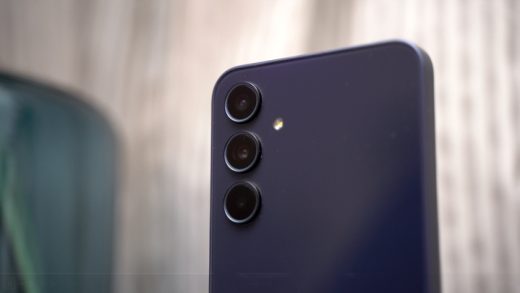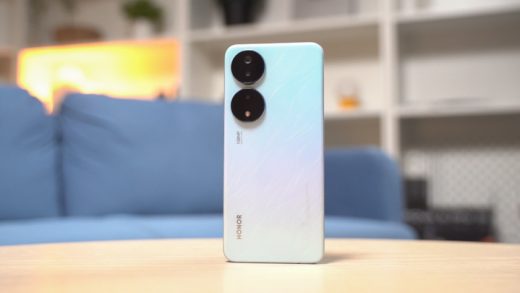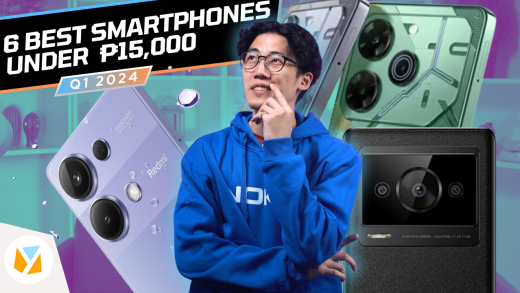A month back, we’ve covered the launching of the latest addition to Sony’s NEX lineup, the NEX-F3. Now that we’ve spent some quality time with it, let’s see how it fared on our full review.
The NEX-F3 is aimed at succeeding NEX-C3 which was only unveiled last year. However, apart from the 1080p @24fps video recording capability, there’s not much of a difference between the two specs-wise.

Given that fact, we’re not quite sure how Sony would position this Mirrorless Interchangeable Lens Cameras (MILC) in the local market, especially if the price of its not-so-distant predecessor goes down.
Design and Construction
The overall design pretty straightforward and resembles that of its predecessor NEX –C3 with a twist of the current NEX lineup (5N and 7). The only thing we didn’t like about it is that Sony still went for the non-collapsible lens in this model.
Its lens inability to be folded/tucked may only present an issue when you’re dealing with storage, but other than that we think that the design of this camera is well thought of. It’s also worth noting that this camera is the second heftiest amongst the NEX lineup at 314g only next to flagship NEX-7 which weighs 353g.

We really like the ergonomic design of the NEX-F3 which is very similar to that of the NEX-5N. Although majority of the NEX-F3’s body is made up of plastic, it doesn’t feel flimsy in the hands. In fact, it feels very comfortable when held thanks to its protruding texturized grip.
The placement of the shutter release button on top of the slightly lowered hand grip which makes up for a more relaxed shooting is a definitely plus to us.

The top part of the camera comprises of Power switch, built-in pop-up flash and accessory port. On the slightly tapered portion of the part is where the flash release, Playback and Movie Record buttons are located.
The 3†LCD occupies most of the back portion of the NEX-F3. A slight adjustment on the rounded body was made to make room for the two buttons and the scroll wheel/four way control. Above the scroll wheel is a piece of leather intended for a better thumb grip.
Hidden under the cover on its left side are the USB and HDMI ports. Underneath the camera are the battery compartment, Memory slot and the hole for the tripod.

Majority of the controls on this snapper mainly relies on its 3†LCD screen. It can take a bit of getting used to before you get totally familiar where to go to for a certain setting. For example, in Manual mode the ISO setting can only be adjusted in the Brightness/Color which is bit of a hassle. A workaround for this is to assign one of the available buttons for ISO.
Display
One of the main features of the NEX-F3 is its LCD Screen. It can be tilted a 100° further than the NEX-C3. This should be a welcome feature for those who love to take pictures of themselves or who always want to be part of the group picture. But unlike the NEX-7, the screen can’t be tilted downwards that far for a much easier overhead shot.

The screen is very clear whether when we’re outdoors, which gets a thumbs-up for us. Common to majority of NEX cameras’ screen is Sony’s Xtra Fine LCD technology which makes up for a more vivid display.
Modes and Controls
For the most part, users will be reliant on the on-screen controls when using the NEX-F3. The UI is a familiar scene as not much has been altered from the UI of the NEXs before it. We’re not saying that it’s a bad thing but it can take a bit of getting used to before you can comfortably navigate your way in the settings. To its credit however, the Help Guide is really helpful in getting you up to speed in familiarizing yourself with the NEX-F3.

This camera offers 10 shooting modes which gives more control and creativity over the shots a user wants to take. A virtual mode dial is displayed under Shoot Mode inside Menu and can be controlled via the Scroll Wheel.
There are also a handful of art filters under Superior and Intelligent Auto shooting modes that adds more creativity to the pictures. These are Toy Camera, Pop Color, Posterization (Colored and B/W), Retro, Soft High-Key, Partial Color (Red, Green, Blue and Yellow) and High Contrast Mono. In addition to these filters, users can also adjust the Brightness, Color saturation and Vividness of the images on the same shooting modes.
Shooting
One of the key features of the Sony NEX-F3 is the Auto Portrait Framing feature under the Superior i-Auto Mode. When a picture is taken (in landscape for example) under this shooting mode with the APF turned on, the camera automatically creates a separate copy of that same picture, crops it, turns it into a portrait, and intelligently frames the subject following the rule of thirds principle. This is a great added feature that will help beginners which would aid them in taking better pictures.

Unlike the 5N and its predecessor C3, the NEX-F3 joins the ranks of its high end sibling NEX-7 by having a built-in flash. Another neat thing about its pop-up flash (which is also present in other MILC like Olympus EPL-1) is that it can be tilted to enable flash bouncing.
However, if you don’t like to use it on a dim condition, you can still capture decent stills thanks to high ISO settings which can go as far as 16000 (Manual Mode).
Here are some pictures taken without flash, with flash directly pointed and flash tilted upwards.

Apart from the lens zoom, the NEX-F3 also offers additional 2.6x magnification thanks to its Clear Zoom feature and 5.5x via Digital Zoom. But as much as possible we don’t suggest zooming in using this as it adds a bit of noise to the images and would sometimes result into fuzzy stills.
[fancygallery ID=”nex-f3″]
Focusing is relatively easy thanks to the camera’s Magnified Focus Assist that can be switched to x4.5 and x9.8. And while that’s good for the most part, especially on Macro shots, other people (like myself) would want to be able to just focus without the Magnified Focus. Unfortunately though you’re bound with that feature and just have to learn to adjust to it.
Video Recording
Another new feature of the NEX-F3 is the ability to record on AVCHD format on top of the regular MP4 format. It can record 1080/24p and 1080/60i in AVCHD and 1440 x 1080 on MP4. Here’s a sample clip in AVCHD format @1920 x 1080 resolution.
Please tick the 1080p version of the video before playback.
Battery
This camera ships with a Lithium-Ion NP-FW50 battery which is graded at 1’080mAh. It’s the same battery pack found in other NEX cameras so upgraders can still use their old battery with this model. As for the battery life, we were pretty impressed with it. We’re not quite sure about the exact number but we were able to take at least 700 pictures and we’ve also recorded a total of 15-20 minutes of HD video clips on one single charge.
Speaking of charging the battery, another welcome feature of this camera is that it can be charged via USB just like any other gadget you might have.
Sony NEX-F3 specifications:
16.1MP CMOS sensor
23.5 x 15.6mm APS-C size
Bionz processor
ISO 100-16000 (Manual)
30-1/4000 sec. shutter speed
2.8x Clear Zoom
5.5x Digital Zoom
3†LCD TFT Display w/ Xtra Fine LCD Technology
Electronic Viewfinder (Optional)
Built-in Flash
External Flash (Optional)
2.5 or 5.5 fps continuous drive
Full HD 1080p recording
1920 x 1080 (60, 24fps) AVHCD and 1440 x 1080 (30fps) MP4
SD/ SDHC/SDXC, Memory Stick Pro Duo/ Pro-HG Duo
RAW + JPEG file format
No GPS, in-camera Image Stabilization and WB Bracketing
Lithium-Ion NP-FW50 1080mAh battery
Dimension: 117 x 67 x 42 mm
Weight: 314 g
Conclusion
We had a great time with the Sony NEX –F3. From its solid construction down to its usability, it’s really a great entry level NEX camera. In our opinion, this will be a good intro camera for photography beginners who are transitioning from their point-and-shoot camera. As with other MILC, users would basically get the best of both worlds by having the ease of use of a POS and the controls of a DSLR.

The big question here is “is it worth the upgrade if you’re already an NEX-C3 user?â€. Our take on that is NO. Same goes if you’re thinking of getting a new one. With the release of this camera, we can expect a significant price drop in the NEX-C3. With this one priced at Php27,999 with not much of a substantial improvement over its predecessor, we think that you’re better of getting the NEX-C3. However if you’re willing to shell out a couple of grand more for a sexier and more ergonomic CSC, you won’t be disappointed with the NEX-F3.

























Mas gusto yung babae kesa camera. Keep it up sa reviews!
I like this one,especially its features.
you can actually turn off magnified focus assist. You can even choose focus peaking mode for an even more precise focusing in macro as well in other modes.